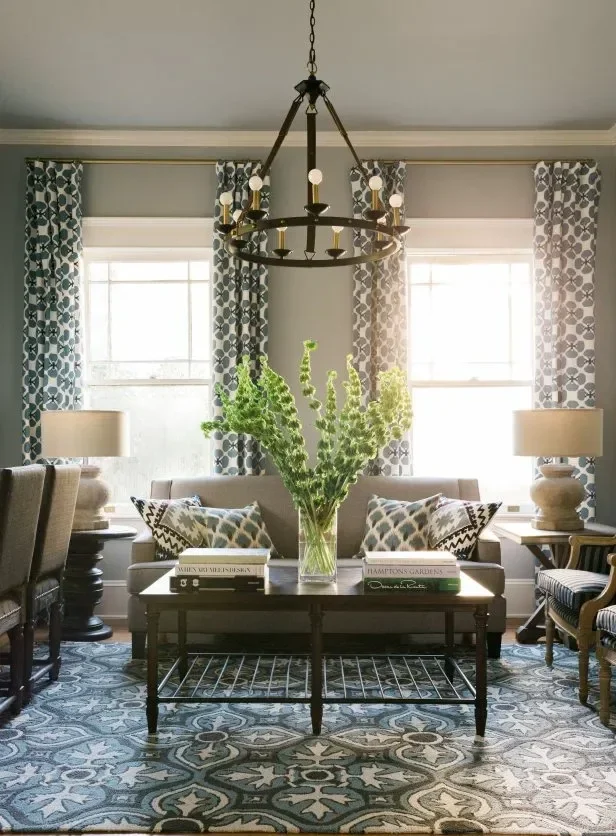
Avoid These Common Window Treatment Mistakes
Treating windows might seem like a minor thing, but it can significantly affect your home’s appearance and ambiance. The coverings and their configurations can control the sunlight that enters a room, can protect your privacy from prying eyes, can add a layer of insulation to improve energy efficiency, and can help make a room feel comfy and look beautiful. Nonetheless, a lot of homeowners pick or set up blinds, curtains, or shades without realizing that they’re making classic mistakes. Maybe you know the ones I mean—interior design faux pas that lead to frustration and that nagging feeling you get when a space isn’t just right. And these errors can waste a lot of money, too. Here are a few curtain or blind mistakes to avoid when you’re choosing window treatments.
This guide is here to assist you. It makes no difference if you are entering a new domicile or simply refreshing your parlor; knowing what not to do can save you a lot of both time and energy. We will cover the most common errors made with window coverings, tell you why they are errors, and offer some helpful advice to steer you clear of those mistakes. If you reside in Annapolis or anywhere else, these practical insights will assist you in making smarter choices regarding your window décor—no sales pitch, just helpful info.
Choosing Style Over Function
Let’s be real, when choosing window coverings, it’s very easy to fall head over heels for the appearance of something. It may be a daring pattern, an on-point textile, or a color choice that’s an absolute match for your interior. Still, and this is a big still: if the window covering in question doesn’t do its assigned job in the space, its good looks become irrelevant.
Consider it this way: Envision installing thin white curtains in your bedroom and then rising every morning at the crack of dawn because they let in too much light. Or picking thick, dark drapes for a small kitchen that already feels kind of claustrophobic. Yes, looks matter. But function matters more.
Before selecting anything, pose to yourself a handful of straightforward inquiries:
- Is it necessary for this room to be bright or dim?
- What level of privacy do I desire in this space?
- Can sunlight harm furniture or flooring?
- Is this a space with a lot of moisture in the air, such as a bathroom or kitchen?
After determining the real needs of the room, selecting the appropriate window treatments in Annapolis, whether blinds, curtains, or shades, becomes an easier task. The challenge really is finding that perfect balance between aesthetics and practicality that makes your space shine. At Meticulous Blinds, we understand this balance and are here to help you choose window treatments that fit both your style and everyday needs.
Incorrect Measurements
Determining the size of your windows might appear to be a quick and easy job. But it’s one of the most common places where people make errors, and those little goofs can lead to some big frustrations. Curtains that hang too short, blinds that don’t quite cover the window, or shades that let in more light than you’d like can usually be traced back to incorrect measurements. Lots of homeowners figure, “Well, if I just use the standard sizes, they ought to work,” or they just eyeball it and think, “This looks about right.” But the reality is that even windows that seem the same can be quite different when you get right down to it. And the precision part? That’s key. You don’t just measure the glass part of the window. You’ve also got to measure the frame. And you need to be clear with yourself about whether the treatment you’re working with is going to go inside or outside the window frame, since that changes the whole approach. And you’re supposed to measure at least three times to avoid the unhappy scenario of trusting just one number and then finding out later that it was the wrong number.
Mounting Mistakes – Inside vs. Outside Mount
Another area where things often go wrong is choosing between an inside or outside mount. This might sound like a small detail, but it can really change how your window treatments look and work. An inside mount means the blinds or shades sit neatly inside the window frame. It gives a clean, built-in look and works well when your windows are deep enough to support it. But if the frame is too shallow, you might end up with blinds that stick out awkwardly or don’t operate smoothly. On the other hand, an outside mount sits above and outside the window frame. This option can make windows appear larger, and it’s a good fix when the window itself is small or oddly shaped. It’s also useful when you want to block more light or cover up window trim.
The problem happens when people choose one without understanding the difference or don’t measure properly for the type they’re planning to use. For example, measuring for an inside mount but later deciding on an outside one means the blinds or drapes might be too short or too narrow.
The key is to decide from the start which mounting style you want and then measure specifically for that. It’s not just about looks—it’s about how well the window treatment will fit, function, and blend with the room. Getting this part right can save you from a lot of unnecessary adjustments later on.
Ignoring the Room’s Purpose
Choosing window treatments requires careful consideration of the function of each room. The demands of different spaces lead to different treatment needs, and what works ideally in one might be a poor choice for another. Take bedrooms, for instance: they need treatments that can guarantee total light blockage for some users if they’re to serve the sleeping function. But living rooms—might they not benefit from having options that still let in some light (with the bonus of being able to see out while still having privacy)? Disregarding how a room is used can lead to some very frustrating situations! Here are a couple of examples:
Trying to watch TV in a room with bright sunlight reflecting off the screen because the curtains don’t block enough light. Or a kitchen with window treatments that get damaged because of moisture and cooking splashes, because those window treatments were not chosen with the room’s conditions in mind.
Also, you need to think about the amount of privacy required. Bathrooms tend to need treatments that afford complete privacy. Other rooms, like a dining room, may function better with only partial coverage. You do need to make this choice thoughtfully, as choosing the wrong type can lead to discomfort or seriously affect the room’s functionality.

Not Considering Maintenance and Cleaning
Another oversight that many individuals make is not seeing how easy—or hard—it will be to keep their window treatments clean and maintained. Different materials and styles require different kinds of care, and if you don’t consider this ahead of time, you might end up with either blinds or curtains that look dirty almost right away or in a very short amount of time.
Window coverings that are easy to maintain can complement just about any lifestyle.
You might:
- Choose dust-attracting fabrics that need frequent cleaning.
- Opt for types of blinds that could be wiped down with a damp cloth.
- Select other kinds of window treatments that require only the most basic cleaning, yet look fabulous.
- Go for solutions that need special care but make the living space feel special.
Choosing a window covering that saves you time and isn’t annoying to maintain can reduce stress in your life.
Choosing the right materials is crucial, particularly when you have pets or young children. You want something durable and easy to clean. Some types of window coverings have small parts, making them unsafe around kids. Heavy drapes can pick up dust faster than you can say, “Close the shades before coming in!” They might also require more frequent cleanings than you have time for in a house that is always busy with playtime, mealtime, and naptime.
Consider it this way: The time and effort you spend in keeping interior window treatments looking fresh and clean is directly proportional to the maintenance requirements of the treatment itself. If you want to spend very little time and effort, you have to choose something that virtually looks after itself. Otherwise, you are going to have to pay with your time and energy to keep whatever you choose looking fresh. So, choose wisely.
Conclusion
It can be difficult to select the proper window coverings, yet not making these frequent missteps can really simplify the decision. Strive to harmonize style and function and to measure with care before you make a choice. Ascertain the best way to mount your treatment and consider the function of each room before making your final decision. Think not only about what will look good but also about what will be practical in terms of maintenance and operation.
Investing a little more time in planning now will save you from the headache and unplanned expenses of correcting bad decisions later. When the work is complete and you’re left standing in the middle of your shiny new room, it will largely be what you envisioned—and what you can afford. One of the more important elements in that vision should be what you want to do with your windows.

